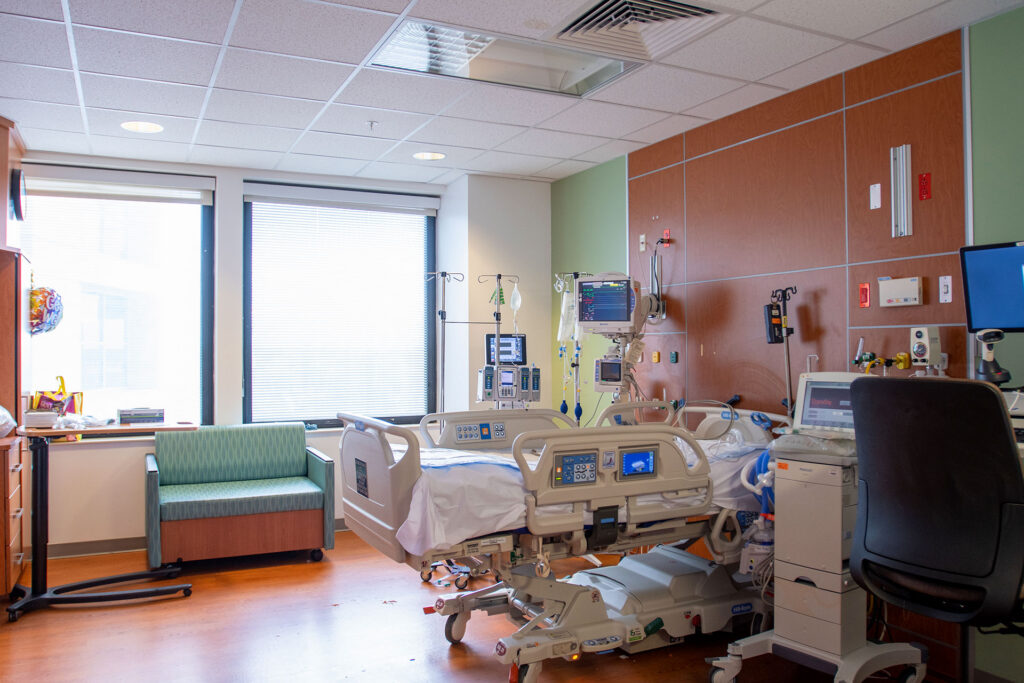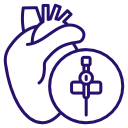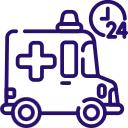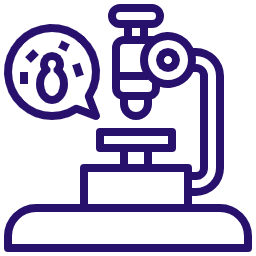Cardiac Rehabilitation
Cardiac Rehabilitation
Philosophy
The cardiac rehabilitation program at Baroda Heart Institute & Research Centre offers each cardiac patient the opportunity to receive optimal levels of the healthcare and fitness through an integrated program of exercise and education. A multidisciplinary team of medical professionals works with the patient and his / her personal physician to reestablish physical and emotional health. At weekly outpatient educational lectures, cardiac patient and their families learn about heart disease and the ways in which diet, meditation and exercise, as well as other lifestyle changes, can help them regain control of their health and their lives.
The Cardiac Rehabilitation Team
Throughout the four – phase rehabilitation program, our multidisciplinary team provides individualized education, counseling and support to patient and their families.The patient’s personal physician often communicates with these highly skilled rehabilitation specialists when prescribing one or more phases of the program. Even after completion of the cardiac rehabilitation program, the team is available to the patient to offer information, instruction and continuing support and guidance.
Reduce Your Risk of Heart Disease
Making changes in your lifestyle to control your cardiovascular risk factors is an important component of your care. Each individual would add months or even years to their lives just by reducing their risk factors. While you can’t control the increased risk of heart disease associated with the age, male gender or a family history of heart disease, you can assume responsibility for your heart health and wellbeing by acting to control the modifiable risk factors.
High Blood Pressure ( Hypertension )
Hypertension increases the risk of the heart attack, heart failure and stroke. Blood pressure should to be checked regularly because high blood pressure often occurs withouts symptoms. in many instances, it can be controlled by maintaining proper weight and reducing salt intake, as well as regular exercise and relaxation. for some individuals, prescription medication may also be necessary.
High Cholesterol
Cholesterol is a fat-like substance. High levels of cholesterol lead to clogging of arteries and increase the risk of heart diseases. Cholesterol level can be lowered by diet and exercise. Heart healthy diet emphasizes fruits, vegetables, whole grains, low fat dairy products, and mono / polysunsaturated vegetable oils and margarines, while limiting the amount of animal protein.
Smoking
Smoking increases heart rate, blood pressure, and accelerates the build-up of fatty plague in the walls of the blood vessels. Statistics show that smokers have twice as many heart attacks as non-smokers. one of the best things you can do for your heart and your health is to quit smoking.
Lace of Exercise
Lace of exercise can contribute to obesity, high blood pressure and high cholesterol. Regular exercise improves heart fitness and helps to control blood pressure, weight, cholestrol and relieves anxiety.
Other factors which are major contributors of Heart Problems include: Diabetes, Obesity Stress
The Four Phases of Cardiac Rehabilitation
Inpatient Treatment
The cardiac rehabilitation program begins during the Patients hospital stay. Participation in light activities, monitored progressive exercise, nutritious diet and a healthy dose of reassurance and support enable the patient to embark on the road to recovery. Health education literature, audiovisual tapes and personal instructors teach both patient and family about heart disease and the role of Instructors lifestyle in reducing coronary risk factors and improving heart health.
Outpatient Rehabilitation – Education
Phase II begins as soon as the patient has been discharged from the hospital or when a personal physician diagnoses a heart disease. Outpatient rehabilitation emphasizes patient and family awareness of the many aspacts of the heart disease, supervised development of good dietary habits and progressive exercise for physical reconditioning. The Cardiac Rehabilitation team works with each patient to identify and modify significant cardiac risk factors such as high blood pressure, diabetes, elevated blood cholesterol, smoking, obesity, poor exercise habits and inability to manage stress.
Outpatient Rehabilitation – Training Under Guidance
In phase III of rehabilitation, patient exercises in the Baroda Heart Institute & Research Centre to increase stamina, endurance and cardiovascular fitness. Each patient works towards achieving personal goals in terms of body weight, control of hypertension, dietary management of elevated blood cholesterol and coping stress. After completion of phase III, the patient may choose to exercise at home, using designed home fitness program.
Maintaining Physical Fitness
The health exercise program (HEP) is monitored and designed to maintain aerobic fitness and cardiovascular conditioning as well as weight control and improve muscle tone. It is available not only to patient who have completed the phase III Cardiac Rehab Program, but also to individuals referred by their physicians. Members begins with a comprehensive evaluation of overall health and fitness. Following the guidelines of the American College of Sport Medicine, these diagnostic tests are used as baseline information for exercise specialists and technologists to tailor an exercise program to meet the needs of each participant. While the goal of the HEP is to aid in the prevention of heart disease, benefits such as looking and feeling healthier, stronger and more confident makes being a member of the HEP even more rewarding.
Cardiac Rehabilitation

Philosophy
The cardiac rehabilitation program at Baroda Heart Institute & Research Centre offers each cardiac patient the opportunity to receive optimal levels of the healthcare and fitness through an integrated program of exercise and education. A multidisciplinary team of medical professionals works with the patient and his / her personal physician to reestablish physical and emotional health. At weekly outpatient educational lectures, cardiac patient and their families learn about heart disease and the ways in which diet, meditation and exercise, as well as other lifestyle changes, can help them regain control of their health and their lives.
The Cardiac Rehabilitation Team
Throughout the four – phase rehabilitation program, our multidisciplinary team provides individualized education, counseling and support to patient and their families.The patient’s personal physician often communicates with these highly skilled rehabilitation specialists when prescribing one or more phases of the program. Even after completion of the cardiac rehabilitation program, the team is available to the patient to offer information, instruction and continuing support and guidance.
Reduce Your Risk of Heart Disease
Making changes in your lifestyle to control your cardiovascular risk factors is an important component of your care. Each individual would add months or even years to their lives just by reducing their risk factors. While you can’t control the increased risk of heart disease associated with the age, male gender or a family history of heart disease, you can assume responsibility for your heart health and wellbeing by acting to control the modifiable risk factors.
High Blood Pressure ( Hypertension )
Hypertension increases the risk of the heart attack, heart failure and stroke. Blood pressure should to be checked regularly because high blood pressure often occurs withouts symptoms. in many instances, it can be controlled by maintaining proper weight and reducing salt intake, as well as regular exercise and relaxation. for some individuals, prescription medication may also be necessary.
High Cholesterol
Cholesterol is a fat-like substance. High levels of cholesterol lead to clogging of arteries and increase the risk of heart diseases. Cholesterol level can be lowered by diet and exercise. Heart healthy diet emphasizes fruits, vegetables, whole grains, low fat dairy products, and mono / polysunsaturated vegetable oils and margarines, while limiting the amount of animal protein.
Smoking
Smoking increases heart rate, blood pressure, and accelerates the build-up of fatty plague in the walls of the blood vessels. Statistics show that smokers have twice as many heart attacks as non-smokers. one of the best things you can do for your heart and your health is to quit smoking.
Lace of Exercise
Lace of exercise can contribute to obesity, high blood pressure and high cholesterol. Regular exercise improves heart fitness and helps to control blood pressure, weight, cholestrol and relieves anxiety.
Inpatient Treatment

The cardiac rehabilitation program begins during the Patients hospital stay. Participation in light activities, monitored progressive exercise, nutritious diet and a healthy dose of reassurance and support enable the patient to embark on the road to recovery. Health education literature, audiovisual tapes and personal instructors teach both patient and family about heart disease and the role of Instructors lifestyle in reducing coronary risk factors and improving heart health.
Outpatient Rehabilitation - Education

Phase II begins as soon as the patient has been discharged from the hospital or when a personal physician diagnoses a heart disease. Outpatient rehabilitation emphasizes patient and family awareness of the many aspacts of the heart disease, supervised development of good dietary habits and progressive exercise for physical reconditioning. The Cardiac Rehabilitation team works with each patient to identify and modify significant cardiac risk factors such as high blood pressure, diabetes, elevated blood cholesterol, smoking, obesity, poor exercise habits and inability to manage stress.
Outpatient Rehabilitation – Training Under Guidance
In phase III of rehabilitation, patient exercises in the Baroda Heart Institute & Research Centre to increase stamina, endurance and cardiovascular fitness. Each patient works towards achieving personal goals in terms of body weight, control of hypertension, dietary management of elevated blood cholesterol and coping stress. After completion of phase III, the patient may choose to exercise at home, using designed home fitness program.
Maintaining Physical Fitness

The health exercise program (HEP) is monitored and designed to maintain aerobic fitness and cardiovascular conditioning as well as weight control and improve muscle tone. It is available not only to patient who have completed the phase III Cardiac Rehab Program, but also to individuals referred by their physicians. Members begins with a comprehensive evaluation of overall health and fitness. Following the guidelines of the American College of Sport Medicine, these diagnostic tests are used as baseline information for exercise specialists and technologists to tailor an exercise program to meet the needs of each participant. While the goal of the HEP is to aid in the prevention of heart disease, benefits such as looking and feeling healthier, stronger and more confident makes being a member of the HEP even more rewarding.
High Blood Pressure (Hypertension)
What Every Patient Should Know

High blood pressure, also known as hypertension, is a condition where the force of blood against your blood vessels is consistently too high. Over time, this extra pressure can damage your arteries and lead to serious health problems like heart disease, stroke, and kidney issues.
It often shows no symptoms, which is why it's called a silent killer — many people don’t know they have it until something serious happens.
- Normal: Less than 120/80 mm Hg
- Pre-Hypertension: 120–139 / 80–89 mm Hg
- High Blood Pressure: 140/90 mm Hg or higher
If your readings are regularly above 140/90, you may have hypertension and should consult a doctor.
If not managed, high blood pressure increases your risk for:
- Heart attacks and heart failure
- Stroke (brain attack)
- Kidney failure
- Vision problems
- Poor circulation in the legs
Common risk factors include:
- Lack of physical activity
- Eating too much salt
- Being overweight or obese
- Family history of hypertension
- Smoking or alcohol consumption
- Stress
- Diabetes or kidney disease
At Baroda Heart Institute, we recommend these lifestyle changes:
✅ Eat a Heart-Healthy Diet
Choose fresh fruits, vegetables, whole grains, and reduce salty or fried food.
✅ Stay Active
Exercise at least 40 minutes a day — walking, yoga, or any movement helps.
✅ Limit Salt and Sugar
Too much salt raises blood pressure. Read labels and cook with less salt.
✅ Quit Smoking and Limit Alcohol
These directly harm your blood vessels and heart.
✅ Manage Stress
Practice relaxation methods like meditation, breathing exercises, or hobbies.
✅ Take Your Medicines Regularly
If your doctor has prescribed BP tablets, don’t skip them. They protect your heart.
✅ Get Regular Check-ups
We recommend checking your BP every 3 months if you're at risk — or more often if you're on medication.
Visit us if:
- Your BP is above 140/90 mm Hg repeatedly
- You experience dizziness, headaches, chest pain, or shortness of breath
- You have a family history of heart problems
Managing high blood pressure doesn’t need to be hard. With regular check-ups and healthy habits, you can live a long and active life. Our expert doctors and cardiac care team at Baroda Heart Institute and Research Centre are here to guide you every step of the way.




